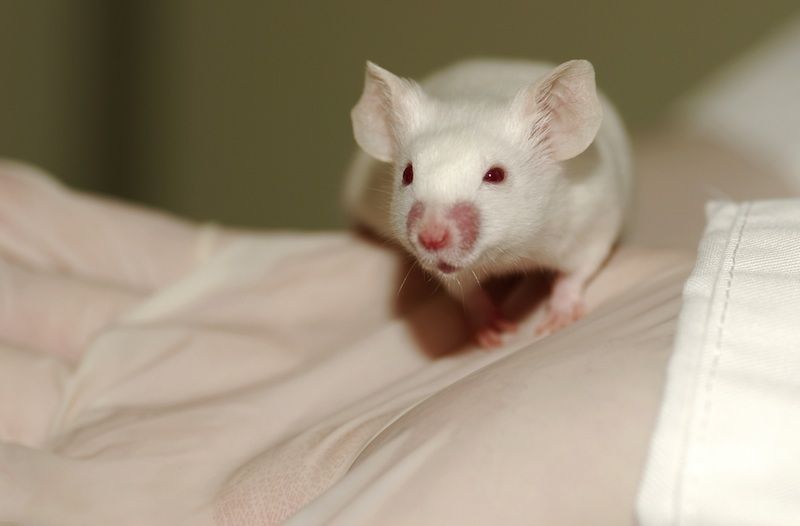Sandy's Havoc: How Scientists Recover After Losing Everything

The loss of lab animals at New York University's Langone Medical Center to Hurricane Sandy has the potential to be devastating to medical research. However, a scientist from Houston who has been through something similar says there's a silver lining to this cloud.
"It was really an opportunity to think differently and work differently, and once we did get the mice back and our colonies going, I think our research is stronger and better for it," said Michael Blackburn, a scientist at The University of Texas Graduate School of Biomedical Sciences at Houston. Blackburn lost all of his laboratory mice to a flood from Tropical Storm Allison in 2001.
While NYU researchers are likely feeling "devastated" at the loss of their research animals, recovery may bring new opportunities, Blackburn told LiveScience.
A blow to research
When Sandy hit the Northeast early this week as a post-tropical storm, the speed and depth of the flood surge overwhelmed one of the three animal research facilities on NYU's campus, according to a university statement. The facility was designed to withstand a surge 20 percent larger than anything seen in the last century, but Sandy's surge topped anything seen in the last 200 years. [On the Ground: Images of Hurricane Sandy]
"Animal resource staff was on site continuously to mitigate the damage from the storm, but due to the speed and force of the surge, animal rescue attempts were unsuccessful," according to NYU.
It can take years to genetically engineer strains of mice for studying specific diseases and treatments, meaning the loss could set back some lines of medical research substantially. With grant money for research in short supply, scientists may also have a tough time getting funds to start from scratch.
Sign up for the Live Science daily newsletter now
Get the world’s most fascinating discoveries delivered straight to your inbox.
But Texas has been there, too. In 2001, Tropical Storm Allison hit southeastern Texas with heavy rains, causing massive flooding in Houston and leaving 30,000 temporarily homeless. The Texas Medical Center, a research campus that houses dozens of institutions including the University of Texas Health Science Center and the Baylor College of Medicine, was hard-hit. According to the UT Health Science Center, floodwaters swept into basement labs, drowning 5,000 research animals at the UT Medical School and causing an estimated $2 billion of damage to the Texas Medical Center campus.
The destruction was initially terrible, Blackburn said. He was out of town during the storm, and heard from a student that they'd lost every last one of their mice, which had been genetically engineered for the study of lung disease. He flew back to Houston to find the animal-care facility still under water.
"I was devastated," Blackburn said.
Silver lining
Immediately after the storm, there was a lot of uncertainty in the lab, Blackburn said. Power was out, so for some time, there was nowhere to work at all.
He wasn't feeling much optimism then, Blackburn said, but within a week, the cleanup and recovery was on. Fortunately, scientific collaboration with other labs paid off.
"As scientists, we're resourceful, we have a community around the country that looks after one another, and I was able to call around and get mice from other colleagues," Blackburn said.
In the meantime, the researchers got creative. They started thinking about other ways to research lung diseases, including cell cultures, computer models and human-based studies. The result was a more diversified line of research.
"It slowed us down, no doubt, but I think in the end it was a success story," Blackburn said.
In another message of hope for NYU researchers facing the difficult task of rebuilding after Sandy, Blackburn recalls the six months after the storm flying by.
"I would just offer encouragement that with hard work it will get better," Blackburn said. "Turn this into a positive — and let us know how we can help."
Follow Stephanie Pappas on Twitter @sipappas or LiveScience @livescience. We're also on Facebook & Google+.

Stephanie Pappas is a contributing writer for Live Science, covering topics ranging from geoscience to archaeology to the human brain and behavior. She was previously a senior writer for Live Science but is now a freelancer based in Denver, Colorado, and regularly contributes to Scientific American and The Monitor, the monthly magazine of the American Psychological Association. Stephanie received a bachelor's degree in psychology from the University of South Carolina and a graduate certificate in science communication from the University of California, Santa Cruz.











